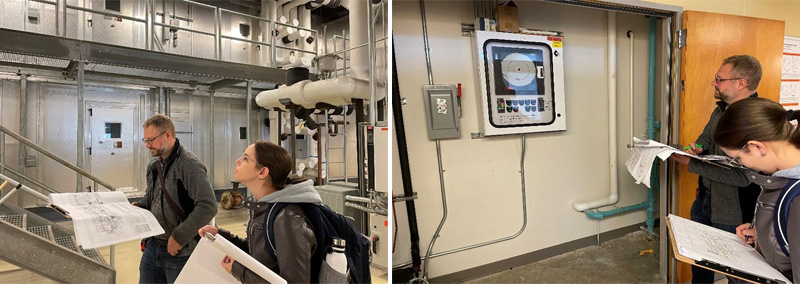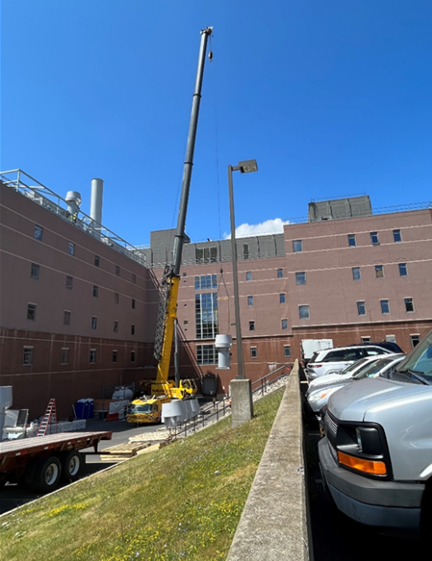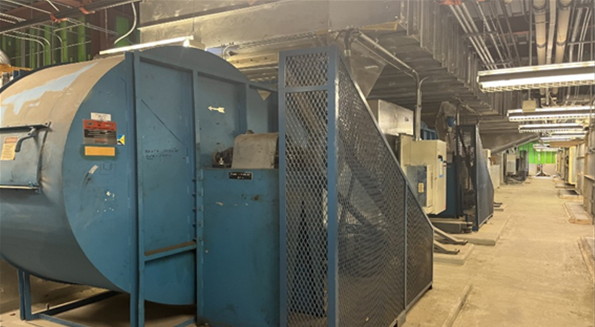Energy Studies Aim to Cut Greenhouse Gas Emissions and Energy Usage in Largest Energy Consumers on Campus
Syracuse University’s Sustainability Management department has been working with NYSERDA (New York State Energy Research and Development Authority) to conduct a study of large energy users on campus. An energy audit of the Life Sciences Complex and a retro-commissioning study of Ernie Davis Hall was completed to see where improvements could be made to reduce energy, cut costs and limit greenhouse gas (GHG) emissions.
Sustainability Management uses a software called EnergyCAP to track building energy usage and cost. Using EnergyCAP, a list was created to compare buildings that are high-energy users to similar types of facilities, including:
- Life Sciences Complex
- Center for Science and Technology (CST)
- Ernie Davis Hall
- Women’s Building
- John A. Lally Athletics Complex
- Heroy Geology Laboratory
- Newhouse 2 and 3
- Machinery Hall
- 623 Skytop Road
- 621 Skytop Road
- Goldstein Student Center
- Tennity Ice Skating Pavilion
As expected, labs and data centers use more energy than a generic academic building. Using this data, Sustainability Management determined Ernie Davis, a LEED (Leadership in Energy and Environmental Design) certified building, and the Life Sciences Complex would be good places to focus efforts.
GHG emissions are categorized into three scopes. Scope 1 includes all direct emissions from campus through operations owned and controlled by the University. Scope 2 emissions are indirect emissions from utilities like purchasing electricity, and scope 3 refers to all indirect emissions from upstream and downstream activities.
The majority of the University’s total CO2e GHG (carbon dioxide equivalent greenhouse gas) emissions are scope 2. 60% of C02e GHG emissions come from the steam and chilled water used to heat and cool buildings.
Walk-throughs of the buildings were conducted to assess current operations in partnership with IBC Engineering. Engineers took note of all energy-using equipment, HVAC (heating, ventilation and air conditioning) systems, temperature controls and lighting fixtures. They assessed anomalies and equipment that was not working properly. They also viewed utility bills to establish benchmarks and studied occupancy schedules.


Using this data, IBC completed an ECM (energy conservation measure) model and a final report with recommendations to cut utility costs, save energy and ultimately reduce greenhouse gas emissions.
Some of those recommendations for Ernie Davis include adjusting occupancy schedules to ensure equipment and lights are only being used when necessary. Air flow monitoring stations were found to be out of calibration, causing inefficient fan and damper operations. It was also recommended to recalibrate or replace the CO2 and pressure sensors as many were found to be out of calibration during testing.
Often the building control systems compensated for the sensors out of calibration and didn’t impact occupant comfort. Similarly, settings can change when equipment breaks or needs to be adjusted for a certain period. Sometimes settings may not return to the original setting. While these points may seem minor, the cumulative impact on energy usage can be significant. These issues cause HVAC systems to work harder and less efficiently, resulting in excessive energy consumption and consequently, greenhouse gas emissions.

Similar to Ernie Davis and Life Sciences, CST has improved its HVAC system over the past few years. The University’s multiphase plan to update the building’s HVAC, started in 2019, is nearing completion. CST now uses a heat recovery loop to capture heat from the building exhaust. The new chiller system in the building uses a high efficiency chiller. Heat that’s pulled from the chilled water loop is being used to heat the building’s dehumidification coils. Both of these systems reduce steam and chilled water consumption, putting fewer demands on the steam system and reducing GHG emissions.
Based on the energy studies, adjustments will continue to be made in these buildings. Sustainability Management is focused on sources of high greenhouse gas generation, as well as other programs and initiatives to improve sustainability measures on campus and reduce emissions. The goal is to look into each building with high energy consumption to see how the University can continue to reduce GHG emissions.
Follow Sustainability Management on Twitter, Facebook and Instagram @SustainableSU and visit sustainability.syracuse.edu for more information. If you have any questions or suggestions, email them at sustain@syr.edu.



